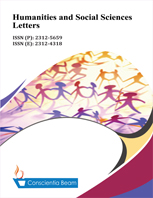Fertility and Household Welfare in Nigeria: A Time Series Econometric Approach
DOI:
https://doi.org/10.18488/73.v10i1.2176Abstract
This study examines the effect of fertility levels on household welfare in Nigeria during the period from 1980 to 2020. Using data from the World Development Indicators for 2021, the estimation process began with a unit root test for the stationarity of the variables. A bounds cointegration test showed the presence of a long-run relationship between household consumption expenditure and fertility, but the result was inconclusive when real GDP per capita was used as a welfare proxy. The ARDL model was employed and the results showed that fertility had a negative, significant effect on household consumption per capita only in the short run. The effect was from previous years thereby showing a lagged effect. However, when welfare is measured using real GDP per capita, there were both short-run and long-run effects, such that Kuznets’ hypothesis of an inverted U-shaped relationship was obtained in the short run. In the long run, however, the relationship becomes U-shaped, implying that there is the possibility of a demographic dividend in the long run. Fertility policies must endeavor to control for the immediate or short-run negative effects of rising fertility rates and make deliberate plans to engage the future large working population in order to reap the possible demographic dividend.

